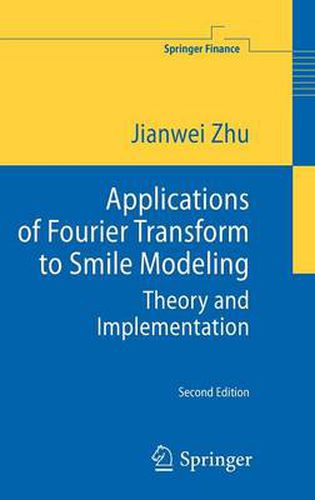Readings Newsletter
Become a Readings Member to make your shopping experience even easier.
Sign in or sign up for free!
You’re not far away from qualifying for FREE standard shipping within Australia
You’ve qualified for FREE standard shipping within Australia
The cart is loading…






This title is printed to order. This book may have been self-published. If so, we cannot guarantee the quality of the content. In the main most books will have gone through the editing process however some may not. We therefore suggest that you be aware of this before ordering this book. If in doubt check either the author or publisher’s details as we are unable to accept any returns unless they are faulty. Please contact us if you have any questions.
This book addresses the applications of Fourier transform to smile modeling. Smile effect is used generically by ?nancial engineers and risk managers to refer to the inconsistences of quoted implied volatilities in ?nancial markets, or more mat- matically, to the leptokurtic distributions of ?nancial assets and indices. Therefore, a sound modeling of smile effect is the central challenge in quantitative ?nance. Since more than one decade, Fourier transform has triggered a technical revolution in option pricing theory. Almost all new developed option pricing models, es- cially in connection with stochastic volatility and random jump, have extensively applied Fourier transform and the corresponding inverse transform to express - tion pricing formulas. The large accommodation of the Fourier transform allows for a very convenient modeling with a general class of stochastic processes and d- tributions. This book is then intended to present a comprehensive treatment of the Fourier transform in the option valuation, covering the most stochastic factors such as stochastic volatilities and interest rates, Poisson and Levy jumps, including some asset classes such as equity, FX and interest rates, and providing numerical ex- ples and prototype programming codes. I hope that readers will bene?t from this book not only by gaining an overview of the advanced theory and the vast large l- erature on these topics, but also by gaining a ?rst-hand feedback from the practice on the applications and implementations of the theory.
$9.00 standard shipping within Australia
FREE standard shipping within Australia for orders over $100.00
Express & International shipping calculated at checkout
This title is printed to order. This book may have been self-published. If so, we cannot guarantee the quality of the content. In the main most books will have gone through the editing process however some may not. We therefore suggest that you be aware of this before ordering this book. If in doubt check either the author or publisher’s details as we are unable to accept any returns unless they are faulty. Please contact us if you have any questions.
This book addresses the applications of Fourier transform to smile modeling. Smile effect is used generically by ?nancial engineers and risk managers to refer to the inconsistences of quoted implied volatilities in ?nancial markets, or more mat- matically, to the leptokurtic distributions of ?nancial assets and indices. Therefore, a sound modeling of smile effect is the central challenge in quantitative ?nance. Since more than one decade, Fourier transform has triggered a technical revolution in option pricing theory. Almost all new developed option pricing models, es- cially in connection with stochastic volatility and random jump, have extensively applied Fourier transform and the corresponding inverse transform to express - tion pricing formulas. The large accommodation of the Fourier transform allows for a very convenient modeling with a general class of stochastic processes and d- tributions. This book is then intended to present a comprehensive treatment of the Fourier transform in the option valuation, covering the most stochastic factors such as stochastic volatilities and interest rates, Poisson and Levy jumps, including some asset classes such as equity, FX and interest rates, and providing numerical ex- ples and prototype programming codes. I hope that readers will bene?t from this book not only by gaining an overview of the advanced theory and the vast large l- erature on these topics, but also by gaining a ?rst-hand feedback from the practice on the applications and implementations of the theory.